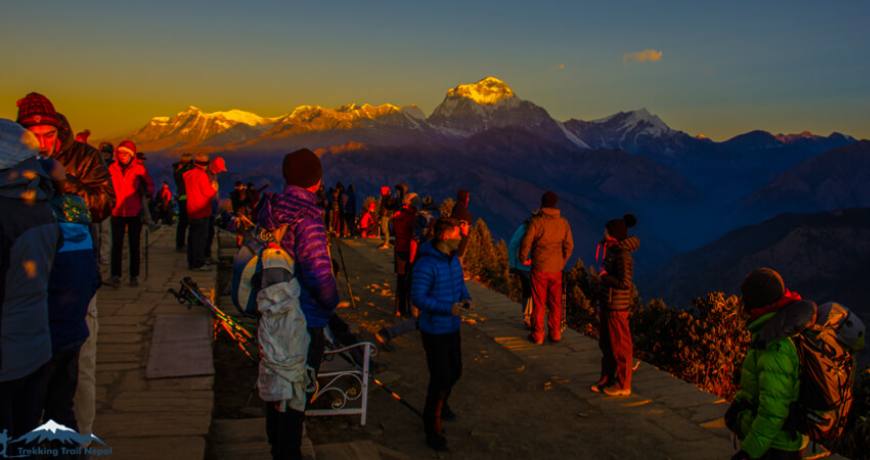Best Trekking in Winter: December-January-February
January and February are not as bad as you think for Trekking In Nepal.
You Can Enjoy Enough Nepal Trek in February!
Nepal trekking in January and February is not considered the best season, like March to May or September to November. However, still, you can enjoy Nepal Trekking with the views of the high Himalayas. Trekking in the Himalayas of Nepal usually takes long holidays and needs to match the best season to enjoy Nepal Trekking. January and February are not the best months for Nepal Trekking but you can enjoy the Himalayas and nature from different perspectives.
December - February and Winter Trekking in Nepal
January and February the two coldest months in Nepal might not be as cold as you used to. If you are from Northern Europe, New Zealand, Korea, North America with Alaska, and Russia. Winter Trekking in Nepal is the best adventure in Nepal with the Himalayas. The High Alpine Trekking Trail will not be open but, Normal trekking trails in Nepal is doable with a little chilly cold, Snowing, and Peaceful trail. From the view perspective, Winter Trek in Nepal or January February trekking in Nepal does not carry the differences from the Peak Trekking season of March-May or September-November as the Everest Base Camp Trek for November or October.
Is your vacation only available in January or February? Have a dream to do Adventure Trekking in Nepal? Winter Trekking in Nepal is the best option for you to experience the high mountains of the Himalayas, Culture, Nature, and more.
Is winter trekking in Nepal cheap?
Winter trekking in Nepal can be less expensive than trekking in the peak seasons, as the demand for trekking services is lower. However, it's important to note that the costs of a winter trek can still vary depending on several factors:
Permits: Some trekking routes in Nepal require permits, and these costs can add up.
Guide and Porter: Hiring a guide and/or porter can add to the costs of a trek, but can also make the trek safer and more enjoyable.
Transportation: The cost of transportation to and from the trailhead, as well as any internal transportation costs, can add to the overall expense.
Accommodation: The cost of accommodation during the trek, as well as the cost of any pre- or post-trek accommodation, can also add to the overall expense.
Food: The cost of food during the trek, which can vary depending on the route and the availability of supplies, can also add to the overall expense.
That being said, in comparison to the peak season, you may be able to negotiate a better price for the guide, porter, and accommodation as there is less demand for them. Additionally, you may be able to find deals or discounts on trekking equipment and gear. It is important to have realistic expectations and to budget accordingly, so you can have an enjoyable and comfortable trek.
Things to consider for February Trekking in Nepal
When planning a trek in Nepal in February, there are several things to consider:
Weather: February is the end of the winter season in Nepal, and temperatures can be quite cold, especially at higher elevations. Make sure to bring warm clothing and gear.
Trail Conditions: Some trails may be snow-covered or icy, making them more difficult to navigate. Consider hiring a guide or porter to help with trail conditions.
Permits: Some trekking routes in Nepal require permits, which can be obtained from the Nepal Tourism Board. Make sure to check the specific requirements for the trek you plan to do.
Physical fitness: Trekking in Nepal can be physically demanding, especially at high elevations. Be sure to prepare yourself adequately with proper training and conditioning before your trip.
Travel insurance: Make sure you have adequate travel insurance coverage in case of an emergency.
Pack accordingly: Make sure you have all the necessary equipment and supplies for the trek.
Do I need a guide for Winter trekking in Nepal?
It is not always necessary to hire a guide for trekking in Nepal, but it is highly recommended, especially during the winter season. There are several reasons why a guide would be beneficial during a winter trek:
Local knowledge: A guide will have knowledge of the trail conditions and the best routes to take, especially in the winter when some trails may be snow-covered or icy.
Safety: A guide will be able to assist with navigation and help ensure your safety on the trek. They can also help you identify and avoid potential hazards, such as avalanches or crevasses.
Language: A guide can assist with communication with local people and can help with any language barriers.
Permits: A guide will help you with obtaining the necessary permits and paperwork for your trek.
Cultural understanding: A guide can help you understand the culture and customs of the local people and provide a more immersive experience.
That being said, it's ultimately up to you to decide whether to hire a guide or not. It's also important to consider your own experience, fitness, and confidence level.
Why choose January or February for Nepal trekking?
These two coldest months also represented the Winter Trek in Nepal. Nepal Trekking in winter is not THE BEST but not bad as you think.

Here we list the 7 reasons why you should trek in January and February. With Best Winter Trekking options for Nepal trekking in February - January.
1 It is the end of trekking season so you will get more peace and fewer trekkers on the trekking trail. Due to the changing climate and Global warming, the 4 season of Nepal is being delayed. As the result, December is also considered The Best Month for Nepal Trekking. Most probably you will get the whole tea house or trails only for you, Hence only fewer trekkers will hit the trekking trail in January or February in the Himalayas.
2. Celebration of English festivals, as well as the Nepalese Festivals lunar calendar, will add some benefits for Nepal Trekking in January and February. Nepalese Festivals like Maghe Sakranti are known as the first day of Nepalese tenth month. Saraswati Puja the festival of the Goddess of Education and Music. The English festivals like New Year and Love festival day known as Valentine's Day will add more flavor to Nepal Trekking in February and January.
3. If you choose Nepal trekking in the month of January or February, you will get the best international flight deals to and from Nepal. Many international airlines that connect to Nepal offer the best flight ticket to Nepal and onwards. Ending of Major Nepalese Festivals, Peak Trekking Season will come to end in November, Airlines like Turkish Air, Malaysian Air, Thai Airways, and Qatar Air offer the best fear for January and February. If you plan to do Nepal trekking in January or February, you will get the best fare possible.
4. Updates of all Trekking Trails, New local rules as well facilities and changes in services available along the trails. The guide's experiences will be refreshed before. Every trekking guides do 4-10 trek in the peak trekking season of September to November. Many times they have hiked on the same trekking trail of the same trek. This not only makes them updates about the Trekking Trails, and changes of services but tells you the recent interesting story and price changes.
5. Best of Winter Trekking in Nepal, Trekking in January and February is the best when you get Natural Hot Spring Pool along the trekking trails. Treks like Annapurna Circuit, Annapurna Base Camp Trek, Poon Hill Jomsom Trek, Tamang Heritage Trek, and Upper Mustang Drive Tour offer you the Natural Hot spring Pool. Natural Hot Water Pool, adventure in chilly weather, and peaceful trekking trail make the best treat for Nepal Trekking in January and February.
6. You can ask for a discount since it is low season and low business with a trekking company. All tourism and trekking are seasonal jobs in Nepal. All services, subordinates, trekking guides, and porters are also part of the seasoned business. Because of very less trekking business in January and February, some companies offer off-season trekking deals or Winter Trekking Offers. If not you can ask for a discount for your Nepal trekking for the months of January and February. Write Us For a Discount.

Low Light of Nepal Winter Trekking February January
Trekking in Nepal in January-February has it advantages as well as carries some disadvantages. As you know Nepal has 4 seasons and January-February is the major winter month. Many of the high alpine trekking trails in Nepal cannot be done in the months of January-February. Here we try to cover 5 reasons why you should not do Nepal Trekking in January or February.
1. If you are looking for joining a group trekking in Nepal, January and February ie the winter season is not best for you. Most groups join, Fixed Departure Trekking in Nepal organized in Peak Season for Nepal Trekking in September - November, and March-May. But if you are lucky and plan a few months earlier and write Trekking Trail Nepal, we can find the group to join you for Nepal Trekking in January or February.
2. You might need some more kinds of stuff for your Nepal Trekking in January-February. To keep your body warm in the winter of the Himalayas, your backpack and Duffel bag for your porter will be a little heavy. If you are a light traveler, we do not suggest you do Trekking in Nepal in January or February, Especially high alpine trekking trails. However, some trekking like Poon Hill Ghandruk Trekking, Kathmandu Valley Rim Trekking, Dhampus Sarangkot Trekking, and Everest View Trek as on.
3. If you hate the chilly cold and snowing, January and February Trekking in Nepal is not for you. Nepal Trekking in January and February is only for Cold Outdoor lovers. Above 2500 meters above sea level, it almost snowing and the trail might cover up to 1-3 feet of snow. There is less chance of the Sun and a high probability of fog. If you are planing to be above 4000 meters high you must be prepared for freezing cold, snowing, and no sunshine.
4. If you are looking to trek in Nepal without a guide, Trekking Trail Nepal will not recommend you choose January or February for Nepal Trekking. In recent years, a few people lost from the trekking trails and never found any presence of them, Neither Alive nor Dead. We hearty request you to think again if you are planing to Nepal trekking in January or February without a guide. Especially for Mardi Himal Trekking, Langtang Valley Trekking, and Tsum Valley Trekking.
5. Days are short in January in comparison to other months. To overcome this you must manage your time properly. December 22 is the shortest day and June 21 is the longest day. The longest night gives you more relaxation and sleep, Where the shortest night gives you more adventure on the trekking trails. Above all after December 22 days will become longer and you will get plenty of time to enjoy your days. If you are not a morning person Nepal trekking in January and February is not for you.

Some of the best treks in Nepal for the winter season of 2024 include:
Everest Base Camp Trek: This trek offers a chance to see Mount Everest up close and also to experience the unique culture of the Sherpa people who call the region home. The trail is well-trodden and well-maintained, making it suitable for trekkers of all levels.
Annapurna Base Camp Trek: This trek takes you to the base of Annapurna, one of the world's highest peaks, and offers stunning mountain views and a chance to experience the diverse culture of the local people. The trail is well-maintained and offers a moderate level of difficulty.
Langtang Valley Trek: This trek takes you to the Langtang valley, home to the Langtang National Park, and offers beautiful mountain views, glaciers, and a chance to experience the unique culture of the Tamang people. The trail is well-maintained and offers a moderate level of difficulty.
Short Poon Hill Trek: This trek offers a chance to experience the beautiful Annapurna mountain range, and also offers a chance to experience the unique culture of the local people. The trail is well-maintained and offers a relatively easy level of difficulty.
Please keep in mind that these are popular trekking routes and during the peak season (Oct-Nov, Feb-May) you may face crowds and difficulty in getting accommodation, so it's always good to have a backup plan or other options in mind. Additionally, always check the weather and trail conditions, as they can vary significantly during the winter season.
Best Winter Trekking in Nepal for January and February. Top 7 Trekking For January and February as your Winter Holidays in Nepal.
- Pikey Peak Trekking
- Everest View Trekking
- Dhampus Sarangkot Trekking
- Mohare Danda Trekking
- Kathmandu Valley Trekking
- Annapurna Base Camp Trekking
- Hot Spring Trek
What you are waiting for? What actually is stopping you away from your Winter Trekking in Nepal? Is the price? Trekking Options? Trekking Services? Write Us regarding your needs about Trekking in Nepal in January or February. We promise, and deliver the Nepal trekking in January and February to the optimum level of safety, services, comfort, and care.
Enquire Us
Recent Post
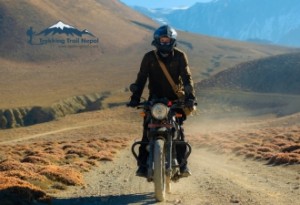
Is Self Driving is Possible in Upper Mustang Nepal?
Upper Mustang Trekking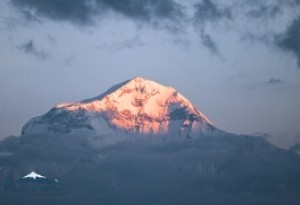
Mohare Khopra Hot Spring Trekking – The Ultimate Community and Nature Experience in Annapurna
Trekking and Adventure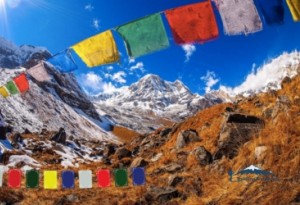
Every Thing You Need to Know about Annapurna Base Camp Trekking
Trekking In Nepal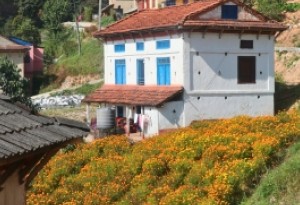
2-Day Treks Around Kathmandu: The Perfect Short Escape for Nature and Culture Lovers
Trekking In Nepal
Related Blog(s)
- Nepal’s Aquatic Biodiversity For Tourism Attraction
- Everest Base Camp Turn into a Lake in 5 years
- Top 10 Best Countries to Visit in 2025 - Nepal
- Second Highest Bungee of the World | Worlds Tallest Swing
- Experience The Ultimate Peace and Nature: Traveling Nepal During Covid-19
- 10 Things To Do In Nepal for The First Time Traveler
- Pokhara International Airport - New Airport in Nepal
- Mohare Monsoon Trek | Monsoon Trekking In Nepal
- Nepal Coronavirus Update - Number of Case Recovery Test and Death
- 14 Highest Mountain of the World - Facts and Record
- Coronavirus Update for Nepal Trekking
- Koshi Tappu Wildlife Reserve Tour | Best Wildlife Tour
- Top 10 Tips to Enjoy Everest Base Camp Trek
- Things to Avoid While trekking to Everest Base Camp
- Frequently Asked Questions about Nepal Trekking
- Gautam Buddha International Airport | Lumbini Regional Airport
- Annapurna Dhaulagiri is the Best Community Trekking in Nepal
- Benefits of Yoga and Trekking in The Himalayas
- Fitness Guide for Trekking in Nepal
- Popular Walking Street in Kathmandu
- Recommended Nepal Luxury Yoga Trek
- Best Things To Do In Pokhara in One Day
- Top 5 Newari Food You Must Try in Kathmandu
- 6 Wonderful Trekking Adventures in the Annapurna Region
- Bhaktapur Durbar Square
- Best 10 Things To Do in Nepal
- Drone In Nepal | Policies and Update 2025 | New Rules Law Application
- Accessible Trekking Trail for Disabled Trekkers
- Bisket Festival - New Year Festival in Nepal
- Internet Services in the Trekking Trails of Nepal
- Mohare Danda Trek - Popular New Trekking In Nepal
- New Entry Fee of Everest Region by Khumbu Rural Municipality
- Why To Visit Nepal in 2025
- Tips for Nepal Travel and Nepal Trek
- World's Highest Mountains in Nepal
